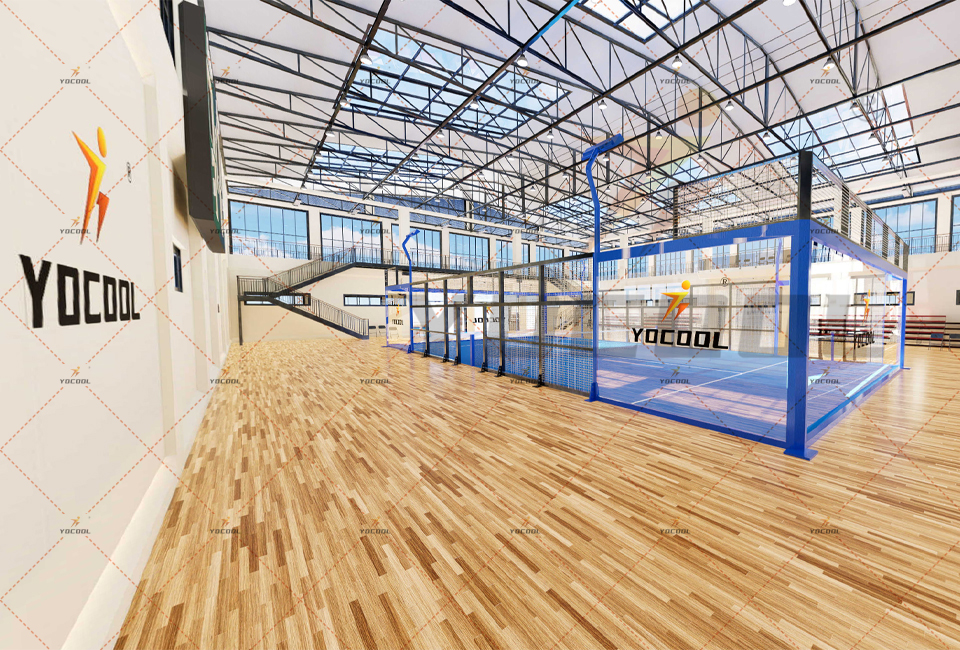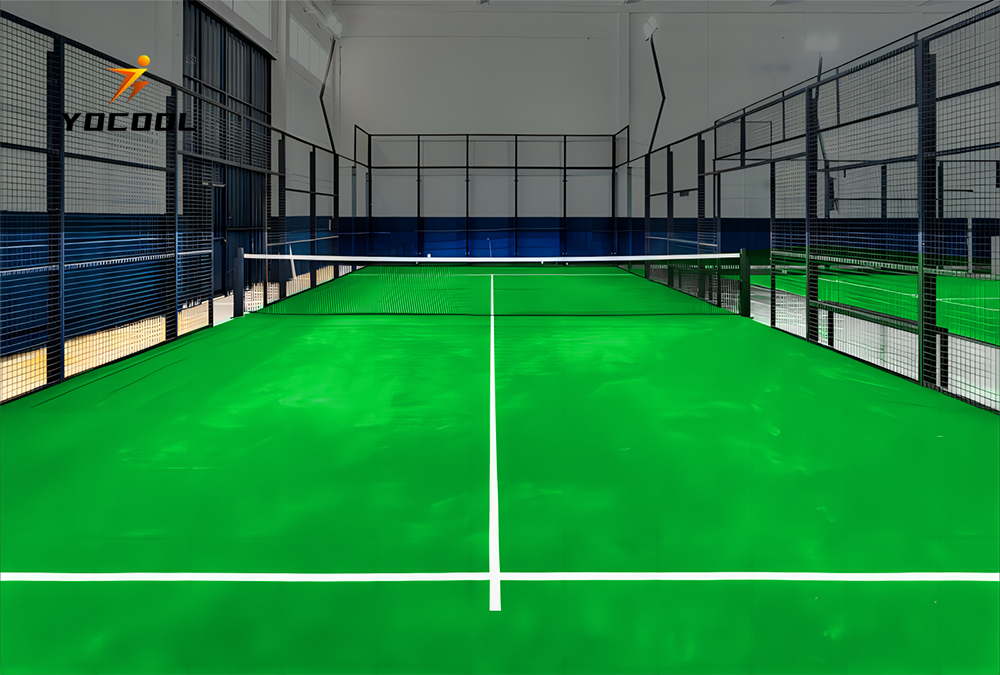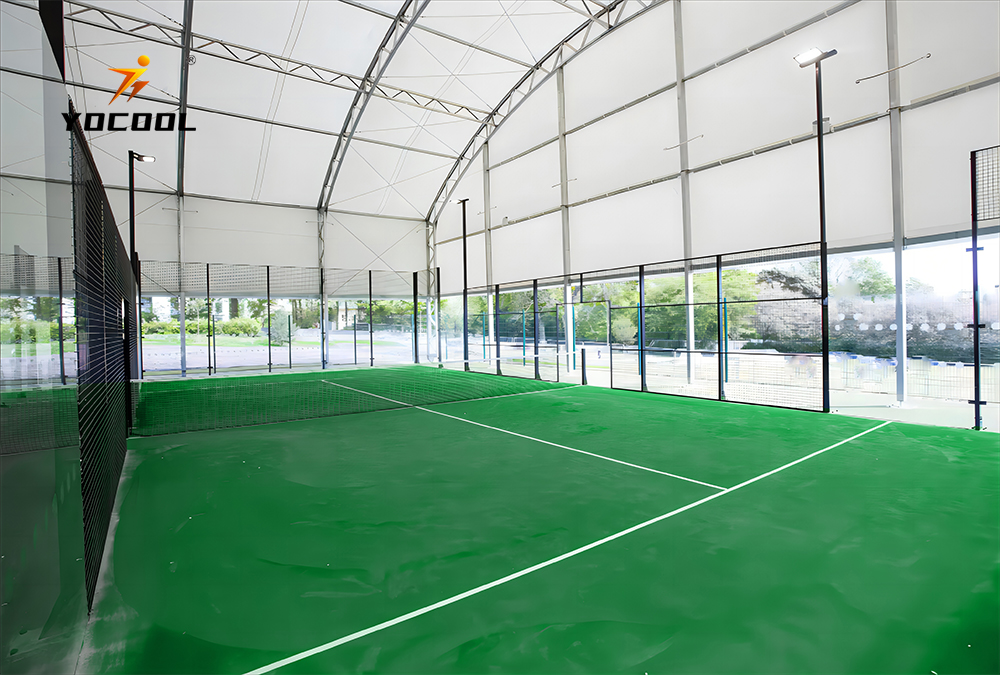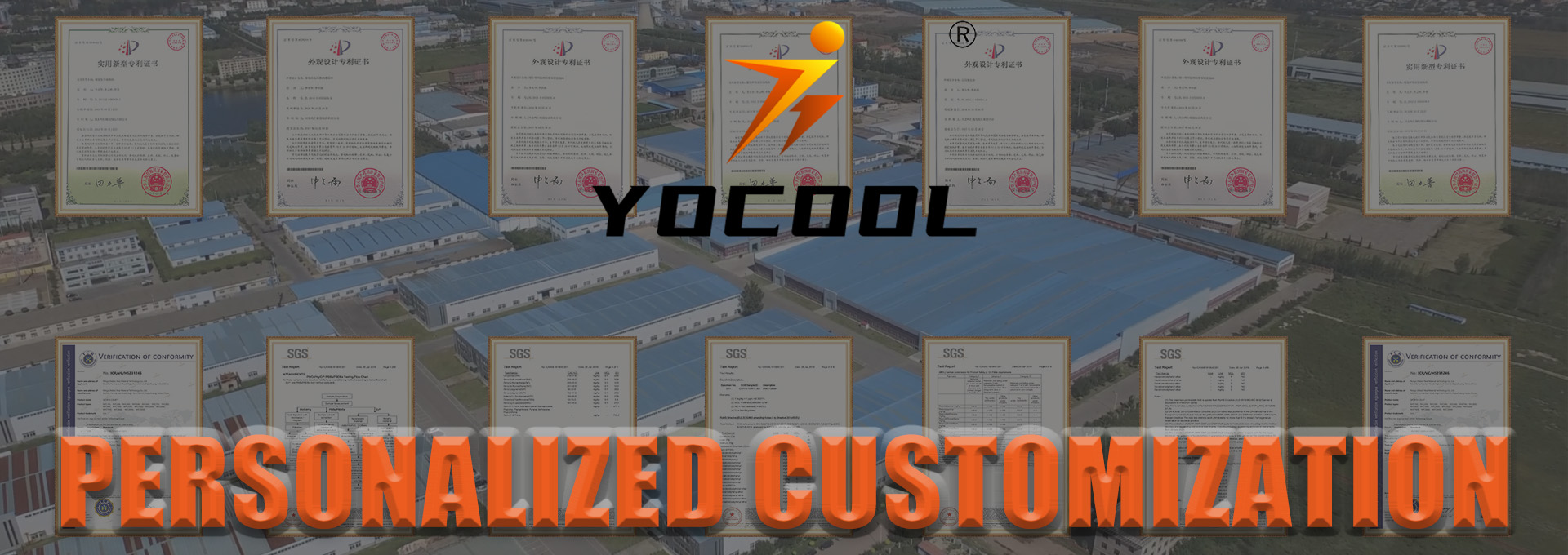Global Innovations in Padel Sports Infrastructure and Equipment
The Evolution of Paddle Tennis Court Systems
The global paddle racquet sports industry has experienced unprecedented growth, with the padel court market expanding at 15% CAGR since 2018. This explosive development stems from the unique accessibility of paddle sports, which combine elements of tennis and squash in specially designed panoramic padel court environments. Unlike traditional tennis, paddle tennis court systems are characterized by their enclosed playing areas, typically measuring 20m x 10m, with walls that play an integral role in gameplay strategy.
Modern padel court construction has evolved significantly with technological advancements. Contemporary courts feature specialized artificial turf surfaces with sand infill that provide optimal ball bounce characteristics while reducing player fatigue. The glass walls in panoramic padel court designs not only enhance spectator experience but also meet International Padel Federation (FIP) standards for professional tournaments. This transformation has positioned paddle tennis court installations as premium recreational and professional facilities worldwide.



Norgo (Hebei) New Material Technology Co., Ltd: Padel Innovation Leader
As pioneers in sports surface technology, Norgo (Hebei) has revolutionized padel court engineering with our patented NO.2 Panoramic Padel Blue system. Designed specifically for professional tournaments, our court systems incorporate:
- UV-resistant glass walls with 12mm thickness meeting FIP standards
- Advanced polymer-sand blend surfaces with optimal shock absorption
- Competition-grade acrylic surface coating for consistent ball response
- Drainage technology handling 500mm/hr rainfall intensity
Explore our featured product: NO.2 Panoramic Padel Blue - The professional choice for Olympic-level tournaments.
View Product SpecificationsPaddle Racquet Technical Parameters
Modern high-performance paddle racquet construction combines advanced materials engineering with biomechanical design principles. The table below details technical specifications for premium racquets used in professional padel tennis court competitions:
| Parameter | Recreational | Professional | Norgo Premium | Impact on Performance |
|---|---|---|---|---|
| Weight (grams) | 360-380 | 340-360 | 350±5 | Control vs power ratio |
| Frame Material | Fiberglass | Carbon Fiber | 3K Carbon Fiber | Shock absorption & durability |
| Core Density (kg/m³) | 25-30 | 32-38 | 36 | Power transmission efficiency |
| Surface Hardness (Shore D) | 40-45 | 45-50 | 48 | Ball rebound consistency |
| Sweet Spot Area (cm²) | 175-200 | 220-250 | 240 | Error tolerance |
| Vibration Damping (%) | 25-35 | 55-65 | 68 | Comfort & injury prevention |
Performance Analysis and Market Trends
Padel Court Installation International Standards
Modern panoramic padel court construction must adhere to stringent international standards. The Federation Internationale de Padel (FIP) regulations mandate specific dimensions: 20m length × 10m width with 4m clearance height. Glass walls must withstand 200kg impact force at competition levels while maintaining 92% light transmission for panoramic padel court visibility. Professional-grade courts feature:
- 12mm tempered glass with anti-glare treatment for side/rear walls
- 30mm thick artificial turf with quartz sand infill (3kg/m²)
- Drainage capacity of 50L/m²/hour precipitation
- LED lighting systems providing minimum 500 lux uniform illumination
- Acoustic insulation rating of 30dB noise reduction
The NO.2 Panoramic Padel Blue system exceeds these requirements with advanced moisture control technology that prevents surface warping in humidity up to 90%, maintaining consistent playing characteristics in all climates. These innovations position Norgo (Hebei) as industry leaders in paddle tennis court engineering worldwide.
Expert Technical FAQ: Paddle Racquet & Court Systems
A: High-density EVA foam cores (32-38kg/m³) deliver the ideal balance. Our tests show that 36kg/m³ EVA compressed at 80℃ provides 17% better energy transfer than standard PU foam while maintaining vibration dampening characteristics essential for injury prevention. The material's closed-cell structure ensures consistent performance regardless of humidity conditions.
A: FIP mandates minimum 500 lux uniform illumination with maximum 0.3 glare index. LED systems should maintain 5600K color temperature for optimal ball visibility. We recommend symmetrical layout with 8 fixtures per court mounted at 6m height, generating 750 lux with UGR<19 for television broadcast compliance.
A: The standard 20x10m dimensions with 3m back walls and 4m side walls create a specific rebound geometry. Our computational fluid dynamics studies show balls impact rear walls at angles averaging 37°, creating strategic opportunities that differentiate padel from other racquet sports. The enclosed design increases average rally duration by 42% compared to open-court sports.
A: 3K carbon fiber offers 3.5× higher stiffness-to-weight ratio than aluminum, allowing frame thickness reduction while increasing torsion resistance. Our vibration analysis shows carbon fiber composites dissipate 65% of vibration energy, reducing tennis elbow incidence by 80% compared to fiberglass frames.
A: Proper base construction requires 150mm compacted hardcore sub-base with 30mm porous asphalt layer achieving 97% Proctor density. The critical slope is 0.7-1% cross-fall for drainage. We install geotextile separation layers to prevent particulate migration that causes surface deformation.
A: UV exposure can degrade surface polymers up to 40% faster without protective coatings. Our solution incorporates nano-ceramic UV filters that extend surface life 3×. In freeze-thaw climates, we recommend heating elements beneath the playing surface to prevent ice formation. Proper maintenance includes quarterly sand leveling and monthly brushing to maintain consistent play characteristics.
Technical References & Industry Research
1. International Padel Federation Technical Standards (2023 Edition). fippadel.org/technical-standards
2. "Advanced Materials in Racquet Sports" - Journal of Sports Engineering (2022). doi.org/10.1016/j.jse.2022.07.008
3. Global Padel Facilities Report - Sports Business Institute (2023). sportsbusiness.org/padel-market-report
4. "Impact Dynamics in Padel Court Walls" - Engineering of Sports Conference Proceedings. sportsengineeringconference.com/archive

